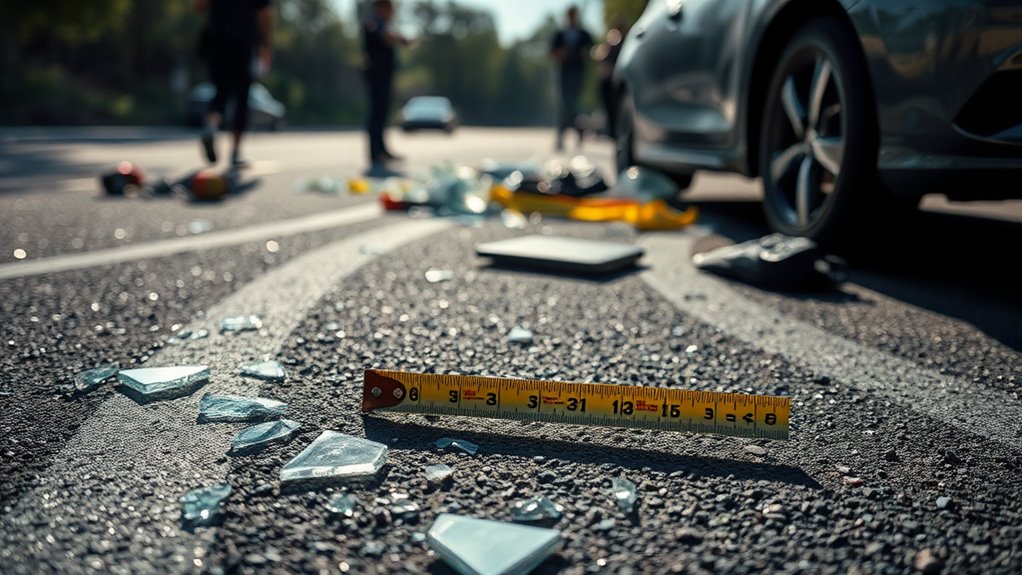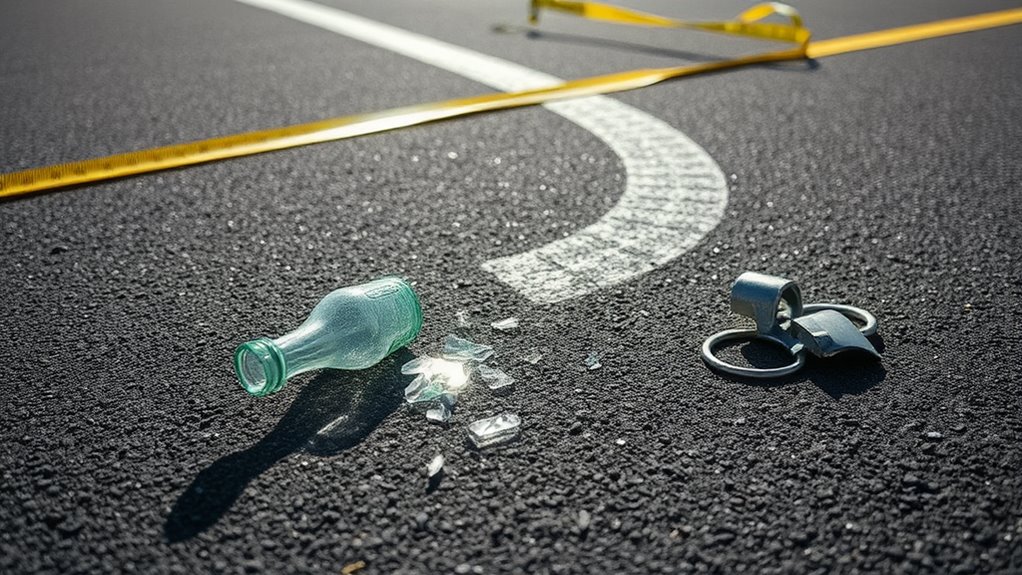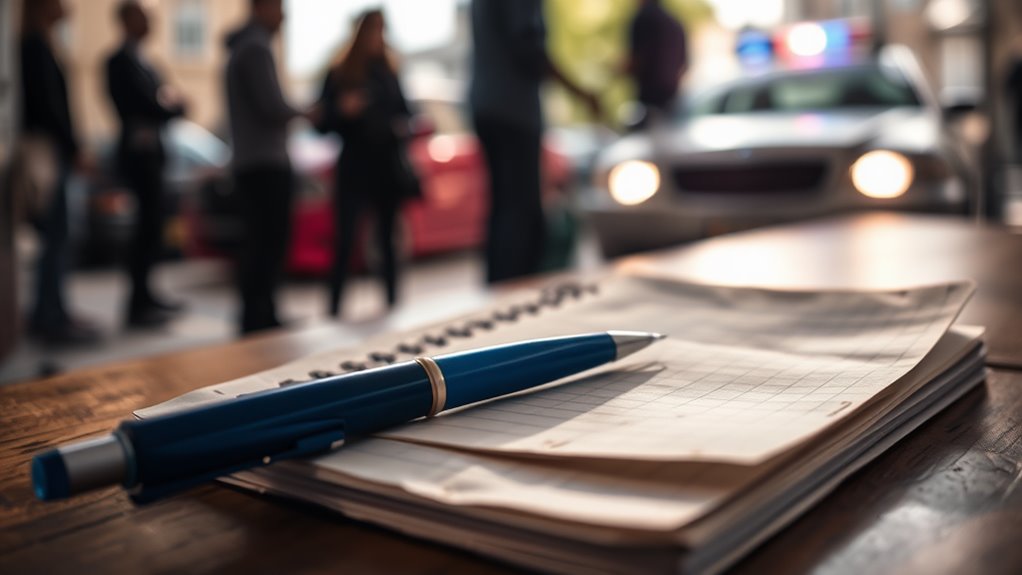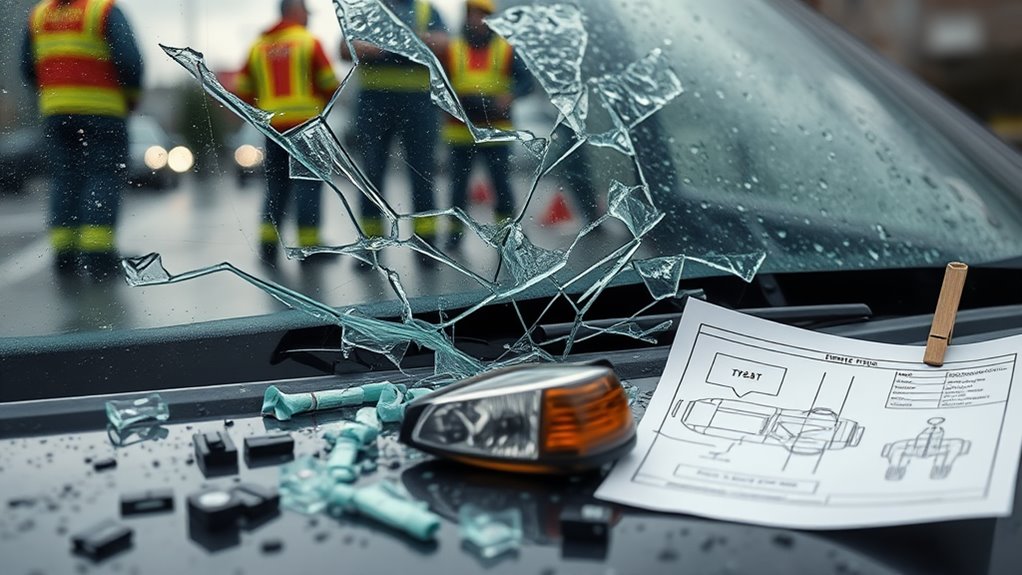
Many people underestimate the importance of evidence in accident cases, but it can make or break your claim. Various types of evidence work together to establish liability and substantiate your injuries. From physical evidence to expert testimony, each plays a unique role in building a strong case. Understanding these essential elements can greatly impact your outcome, so let's explore what you need to know to protect your interests effectively.
Key Takeaways
- Physical evidence, like vehicle parts and clothing, is crucial for proving liability and understanding the accident dynamics.
- Medical evidence, including records and diagnostic scans, supports claims for injuries and medical expenses.
- Police reports provide an objective account of the accident, detailing involved parties and circumstances.
- Witness statements offer valuable firsthand accounts that clarify fault and strengthen the case.
- Photographic and video evidence capture the scene and injuries, providing essential visual documentation for legal proceedings.
Physical Evidence

When it comes to accident cases, physical evidence plays an essential role in establishing the facts. It's tangible and can include vehicle parts left at the scene, bloody clothing, or debris like broken glass. Each piece tells a story, whether it's skid marks revealing speed or tripping hazards highlighting negligence. Physical evidence is crucial for proving liability and helping to create a comprehensive case. Additionally, consulting a traffic attorney can help ensure that all relevant evidence is properly collected and presented.
You should document everything—photos of the scene, vehicle damage, and visible injuries all help reconstruct what happened. This evidence supports your claims and provides context for witness statements. Preserving it's vital; guarantee all signs are photographed and stored properly.
Medical Evidence
Medical evidence is vital in accident cases, as it provides the foundation for understanding the extent of injuries sustained. Your medical records and charts document injuries and treatments, while doctor's notes detail diagnoses and prognoses.
Medical evidence is crucial for accident cases, detailing injuries and treatments while guiding compensation assessments.
Nursing comments further assess your condition, and diagnostic scans like x-rays and MRIs visualize injuries effectively. Laboratory test results support diagnoses, ensuring a thorough view of your health.
This evidence establishes the severity of your injuries, helping determine compensation for pain and suffering, medical expenses, and loss of functionality.
Collecting and preserving this evidence promptly is essential. Consistent follow-up visits and secure storage of records maintain integrity, ensuring your case is supported by clear, accurate medical documentation.
Police Reports
Understanding the role of police reports in accident cases is crucial, as they serve as a cornerstone for establishing the facts surrounding the incident.
These reports detail important information, such as the time, date, and location of the accident, along with the conditions that contributed to it. They also list the parties involved, vehicle details, injuries, and any legal observations made by officers.
This documentation is essential for insurance claims, as it verifies accident specifics and aids in determining fault. Additionally, police reports provide an objective account that can influence legal outcomes.
Obtaining a copy promptly can strengthen your case and guarantee you have the necessary evidence to support your claims effectively.
Witness Statements

While the details captured in police reports are crucial, witness statements offer an irreplaceable perspective that can make or break your accident case. These firsthand accounts establish fault and add credibility to your claims.
They're particularly important when there's a dispute over who's at fault, filling in gaps that other evidence might miss. To collect effective statements, identify potential witnesses, like drivers or pedestrians, and approach them respectfully. Record their contact information for follow-ups.
Confirm statements include the witness's full name, accident details, and observations. Focus on facts, avoiding opinions. Solid witness statements can greatly bolster your case, helping to secure greater compensation by clearly demonstrating the defendant's negligence.
Don't underestimate their power!
Photographic and Video Evidence
Witness statements provide invaluable insights, but photographic and video evidence can further solidify your case. Capturing vehicle damage, scene conditions, and injuries through photographs helps establish the severity of the accident.
Wide-angle shots offer context, while close-ups document injuries for insurance claims. Video evidence, like dashcam or surveillance footage, can recreate the accident sequence, clarifying liability by showing actions leading up to the incident.
This footage supports your claims and is admissible in court when authenticated. To maximize the effectiveness, use multiple angles and timestamp your evidence.
Technological and Documentary Evidence
Incorporating technological and documentary evidence can greatly enhance your accident case, as it provides concrete data and context that traditional methods might overlook.
Utilizing advanced tools can strengthen your argument and clarify the events surrounding the incident.
- Dashcams and surveillance footage offer unbiased accounts of the accident.
- Smartphones and social media can provide real-time documentation and contradict false statements.
- Vehicle Event Data Recorders (EDRs) capture critical metrics like speed and braking, determining fault.
These evidence types not only bolster your case but also provide a thorough understanding of the circumstances.
Expert Testimony

Technological and documentary evidence can substantially bolster your accident case, but to truly solidify your claims, expert testimony plays an essential role.
Expert witnesses establish causation by linking the accident to your injuries and clarifying any disputed facts. Their detailed analyses enhance credibility, making your claims more persuasive.
Medical experts detail the extent of your injuries, while accident reconstruction experts recreate scenes to illustrate how events unfolded. Economic experts calculate your financial losses, including future expenses and lost wages.
Conclusion
To sum up, gathering and presenting the seven essential types of evidence can make or break your accident case. While you might think your word alone is enough, remember that solid evidence paints a clearer picture and strengthens your claim. By focusing on physical, medical, and expert testimony, you can build a compelling case that leaves no room for doubt. Don't underestimate the power of well-documented evidence; it's your best ally in achieving justice and fair compensation.


